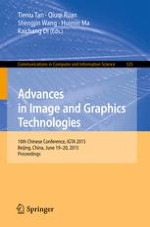2015 | Buch
Advances in Image and Graphics Technologies
10th Chinese Conference, IGTA 2015, Beijing, China, June 19-20, 2015, Proceedings
herausgegeben von: Tieniu Tan, Qiuqi Ruan, Shengjin Wang, Huimin Ma, Kaichang Di
Verlag: Springer Berlin Heidelberg
Buchreihe : Communications in Computer and Information Science
